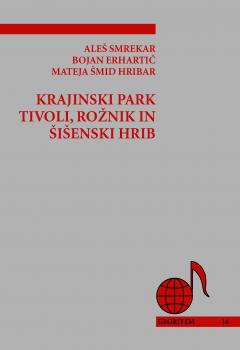Krajinski park Tivoli, Rožnik in Šišenski hrib
A quality living environment is an important value of modern life, which is not measured only with GDP, as one of its key factors is also the amount and the quality of green areas, which guarantee a healthier way of living and overall improve the quality of life. We only become aware of these “life-necessities" when their scarcity is almost critical.
Among all green areas in Ljubljana, the area of Tivoli, Rožnik and Šišenski hrib, which extends to the west of the city centre, has a special place. This area was in 1984 decreed a landscape park. The decree, which is today considered as obsolete, puts a special emphasis on the fact that this park represents the identity of the city of Ljubljana, where natural and cultural elements form a wholesome landscape image. The weakest part of the decree concerns the managing of this landscape park, seeing that, despite the protection arrangement, the decree includes no information regarding the management of the landscape park, nor does it set any standards of behaviour one should uphold when perusing the park.
The area of landscape park comprises the park-part Tivoli, the central forest part and the western part, including the green stripe along the POT (in the past known as Path of remembrance and comradeship). Each of these constituent parts has its own renowned value and offers various ways of experiencing nature and spending free time as well as represents a natural habitat for flora and fauna. All three constituent parts should be regarded as a supplementary entities, with which this area differs from all other parks and green areas in comparable European cities.
The most frequent form of recreation in the forest part of the park is walking, while the most common activity in the POT-part is cycling. In Tivoli Park we can find pedestrians as well as cyclists, even though cycling is not even allowed within the park. Due to high numbers of visitors to the landscape park, which is estimated around 1.750.000 people yearly, a conflict among land-owners, visitors and goals for preserving nature and culture exists. Numerous conflicts among various parties, which prevent the issue of park management from being resolved also hinder further development of the area, although in some aspects the progress made can clearly be seen.
It is necessary to address the issue of professional management of the landscape park, which has to possess the needed spectrum of knowledge of nature conservation, of preserving the cultural landscape and understanding the role of man within the landscape park. The park is currently quite neglected and in many places unnecessarily dilapidated. The zonation of the park, with adequate arrangement of activities, is necessary. Combining elements, which are already a constituent part of the landscape park, into a wholesome mosaic, will be far more important than including newly-built structures into the park. We offered also some suggestions about the management and further development of the landscape park.
Downloads

Series
License

This work is licensed under a Creative Commons Attribution-NonCommercial-NoDerivatives 4.0 International License.
